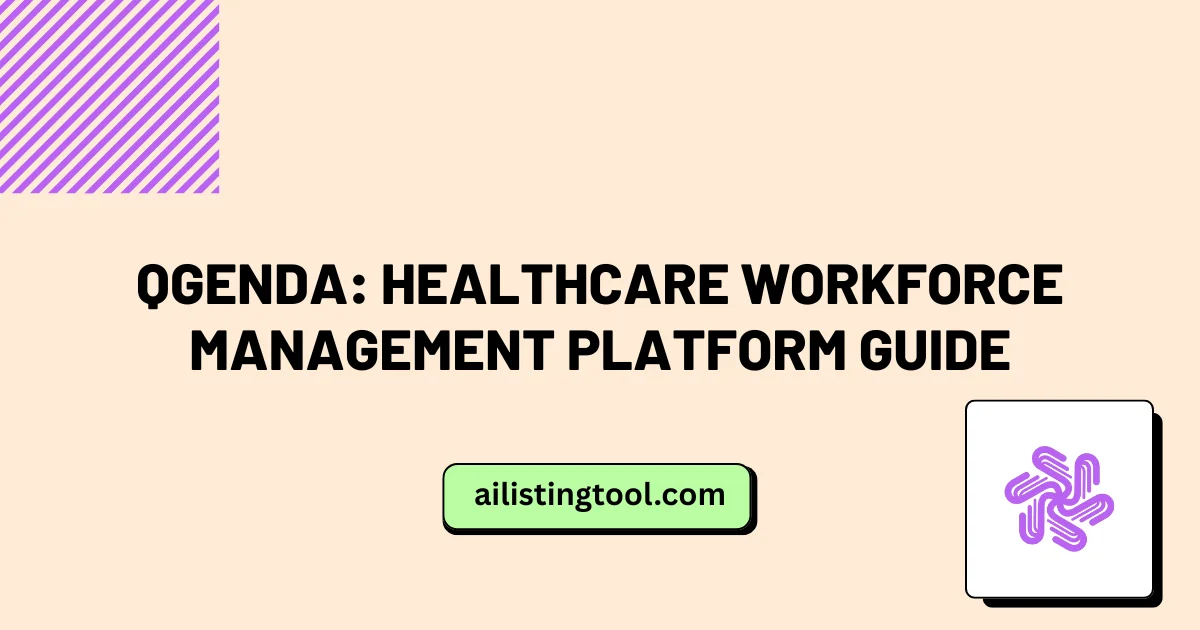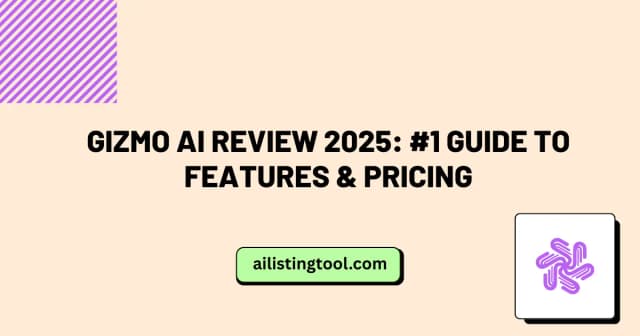QGenda: Healthcare Workforce Management Platform Guide

Healthcare organizations across the United States are facing an unprecedented workforce crisis. The U.S. faced a shortage of 54,100 to 139,000 physicians by 2033, while the nurse deficit could reach 2.1 million as soon as 2025 QGenda. Adding the alarming burnout rates, where nearly 52% of nurses plan to leave their current job, with 44% citing burnout and high-stress environments as the primary reason QGenda, and it becomes clear why healthcare leaders are desperately seeking solutions.+
This is where QGenda enters the picture as a purpose-built workforce management platform that’s helping over 4,500 healthcare organizations not just survive these challenges, but actually thrive through them.
What Makes QGenda Different from Generic Scheduling Tools
QGenda revolutionizes workforce management for the healthcare industry as the only provider to unify credentialing, scheduling, on-call, time and attendance, and capacity management on a single platform QGenda. Unlike generic workforce management systems that try to serve every industry, QGenda was built from the ground up exclusively for healthcare, and that healthcare-only focus makes all the difference.
The platform addresses something that plagues most healthcare organizations: managing the world’s most complex workforce using outdated, disconnected systems that create data silos, communication bottlenecks, and frustrated staff. QGenda provides a single source of truth for workforce data, bridging HRIS, EHR, and clinical communications systems QGenda, which means everyone from physicians to nurses to administrators can access the same real-time information through a single login.
The Core Features Healthcare Organizations Need
QGenda’s ProviderCloud platform isn’t trying to be everything to everyone. Instead, it focuses on the specific pain points that healthcare workforce managers deal with daily.
AI-Powered Scheduling Optimization sits at the heart of the platform. The system uses AI-driven schedule optimization and automated workflows to ensure the right providers, with the right skills, are in the right place at the right time – at the right cost QGenda . This isn’t just about filling shifts; it’s about creating equitable, balanced schedules that reduce provider burnout while maintaining optimal patient coverage. For organizations exploring AI automation tools across different departments, QGenda represents a specialized solution built specifically for healthcare’s unique complexities.
For nurse and staff scheduling, the platform takes on the unique complexities that make healthcare scheduling so challenging. The mobile-first solution enables flexible, cost-effective scheduling and improved planning while empowering nurses and staff with self-service capabilities for shift swaps, split shifts, and PTO requests QGenda. This self-service approach dramatically improves employee satisfaction while reducing the administrative burden on management—a key component of effective business management in healthcare settings.
Credentialing and Payer Enrollment represents another critical piece of the puzzle. Recent implementations demonstrate the real-world impact: MyMichigan Health implemented QGenda Credentialing to improve operational efficiency and decrease credentialing time after facing a significant increase in rapid credentialing requests following the acquisition of three hospitals HIT consultant. The system auto-populates provider information and enables providers to complete applications, track credentialing status, and manage documents through a single login that also handles their scheduling and time tracking.
On-Call Management ensures that healthcare organizations can quickly find and contact the right on-call provider every single time. The platform provides system-wide visibility into who’s available, reducing response times and improving patient care coordination across departments.
Time and Attendance Tracking goes beyond simple clock-in and clock-out functionality. The platform incorporates more than 40,000 pay rules that address healthcare-specific pay structures and complexities to ensure accurate pay and improve compliance QGenda. This level of detail matters tremendously in an industry where compensation calculations involve complex variables like on-call hours, shift differentials, and specialty-specific requirements.
Real Results from Healthcare Organizations Using QGenda
The difference between theoretical benefits and actual outcomes becomes clear when looking at how healthcare organizations are using QGenda. The platform helps organizations reduce the cost of overtime, extra shifts, and premium labor by 25% through optimized schedules that make the most efficient use of existing workforce QGenda.
One healthcare organization reported having 5,000 providers using QGenda to manage where they’re going, their time management, and payroll processing for the entire workforce QGenda. The director emphasized that centralizing all systems creates huge cost containment benefits from an IT perspective while making operations more efficient.
For nursing leadership specifically, the impact on workforce engagement stands out. Healthcare organizations implementing QGenda for nurses cite the ability to give nurses freedom to control their own schedules through easy-to-use self-scheduling tools, while simultaneously providing nurse leadership with visibility into staffing gaps and insights to fill those gaps quickly and cost-efficiently QGenda.
Who Should Consider QGenda for Their Organization
QGenda is best suited for larger healthcare organizations with complex scheduling needs, with its robust features and integration capabilities making it ideal for managing multiple providers, locations, and specialties. The platform serves academic medical centers, hospitals, health systems, federal organizations, national practice groups, and private practices across numerous specialties.
Organizations currently managing workforce through spreadsheets, multiple disconnected systems, or generic scheduling tools that weren’t designed for healthcare complexity will find the most value in making the switch. If your organization struggles with provider burnout, high premium labor costs, credentialing delays, or lacks system-wide visibility into workforce utilization, QGenda addresses these specific challenges head-on. Healthcare administrators looking to streamline operations might also benefit from exploring other task automation solutions for non-clinical workflows.
However, smaller practices may find the platform’s pricing and complexity to be a deterrent, suggesting that organizations should carefully evaluate whether their size and scheduling complexity justify the investment.
Understanding the Implementation and Support Experience
Users generally find QGenda user-friendly and customizable, helping them stay organized and manage schedules efficiently, with straightforward navigation and a logical layout. However, the feedback isn’t uniformly positive across all aspects of the user experience.
Some users report glitches, a complex admin experience, and challenges with the mobile app, with implementation sometimes being difficult. The administrative side of the platform requires a learning curve, particularly for organizations customizing the system to match their specific workflows and rules.
Customer support quality has been a topic of discussion among users. Users report that customer support is generally responsive and helpful, though some mention inconsistent service and slower issue resolution since losing dedicated contacts. The experience seems to vary, with some organizations praising their support teams while others express frustration with response times.
Pricing Considerations and Investment Decision
QGenda doesn’t publish standard pricing on its website, instead offering customized quotes based on organization size and specific needs. QGenda does not offer a free version but does offer a free trial, with no credit card details required for the trial. This approach makes sense given that healthcare organizations vary tremendously in size, complexity, and specific requirements.
Organizations evaluating QGenda should plan for a consultative sales process where they’ll need to discuss their specific scheduling challenges, number of users, integration requirements, and desired features. The investment typically represents a significant commitment, but organizations should weigh this against the cost of continuing with inefficient systems, high premium labor expenses, and workforce turnover driven by scheduling frustrations.
The Digital Transformation Context
Recent survey findings reveal that more than 85% of healthcare IT leaders believe consolidating workforce management tech stacks positively impacts operational efficiency and productivity, yet only 28% are targeting system-wide workforce management technology consolidation. This gap represents both a challenge and an opportunity for healthcare organizations.
The workforce management digital transformation often gets overlooked in broader healthcare IT initiatives, yet it directly impacts employee experience, operational costs, and ultimately patient care quality. Organizations implementing QGenda are choosing to prioritize workforce management as a strategic investment rather than treating it as a purely administrative function.
Integration with Your Existing Healthcare Technology Stack
One of QGenda’s significant strengths lies in its ability to work within the complex technology ecosystem that healthcare organizations have already built. The QGenda platform seamlessly bridges HRIS and EHR systems for reliable data exchange and consistency, with integration to the EHR automatically sending patient census and acuity data to QGenda to inform staffing and deployment decisions.
This integration capability means organizations don’t need to rip and replace their existing systems. Instead, QGenda becomes the connective tissue that brings workforce data together from disparate sources, creating that single source of truth that enables better decision-making across the organization.
The Bottom Line on QGenda
Healthcare workforce management represents one of the most challenging operational aspects of running a healthcare organization today. The complexity goes far beyond simply filling shifts; it encompasses credentialing compliance, equitable scheduling that prevents burnout, cost optimization, and ultimately delivering quality patient care.
QGenda has built a platform specifically designed for these healthcare-unique challenges, and the results speak through the 4,500+ organizations that have chosen to implement it. The platform delivers measurable cost savings through reduced premium labor spending, improves employee satisfaction through better scheduling and self-service capabilities, and streamlines credentialing to get providers working faster.
For organizations currently struggling with disconnected systems, high labor costs, workforce burnout, or credentialing delays, QGenda offers a comprehensive solution worth serious consideration. The investment requires careful evaluation of your organization’s size, complexity, and specific needs, but for larger healthcare organizations managing complex workforce challenges across multiple locations and specialties, the platform delivers capabilities that generic workforce management tools simply cannot match.
The healthcare workforce crisis isn’t going away anytime soon. Organizations that invest in modern, healthcare-specific workforce management tools position themselves to not just manage the crisis, but to actually improve employee satisfaction, control costs, and deliver better patient care even as the challenges intensify.
Found this helpful? Share it with others who might benefit!
The Premier AI Tools Directory for Global Visibility
AIListingTool connects AI innovators with 100K+ monthly users. Submit your AI tool for instant global exposure, premium backlinks & social promotion.
Submit Your AI Tool 🚀Related Articles

Animon AI Review 2025: Free Image to Anime Video Magic
The world of digital content creation has been revolutionized by artificial intelligence, and anime enthusiasts now have access to tools that seemed impossible just a few years ago. Among these innovations, Animon AI stands out as a game-changing platform that transforms ordinary images into dynamic anime videos within seconds. Whether someone is a content creator […]

HRMS Globex: Complete Guide to Features & Pricing
Managing human resources manually has become a thing of the past. Organizations today need robust, automated solutions to handle payroll, attendance, performance reviews, and employee data efficiently. This is where HRMS Globex comes into play as a comprehensive solution designed to streamline HR operations for businesses of all sizes. This guide explores everything professionals need […]

Scribd Review 2024: Is This Digital Library Worth It?
In today’s digital age, readers have more options than ever for accessing their favorite books. With the rising costs of physical books and the convenience of digital reading, many book lovers are turning to subscription-based services. Among the most popular options, Scribd has emerged as a leading digital library that promises unlimited reading for one […]

Gizmo AI Review 2025: #1 Guide to Features & Pricing
The artificial intelligence landscape has transformed dramatically, with new tools emerging to help professionals, students, and businesses streamline their daily workflows. Among these innovations, Gizmo AI has positioned itself as a versatile solution that addresses multiple needs across different industries. This comprehensive guide explores what makes this AI tool stand out in an increasingly crowded […]
Ready to Transform Your AI Tool's Future?
The next wave of AI adoption is happening now. Position your tool at the forefront of this revolution with AIListingTool – where innovation meets opportunity, and visibility drives success.
Submit My AI Tool Now →
